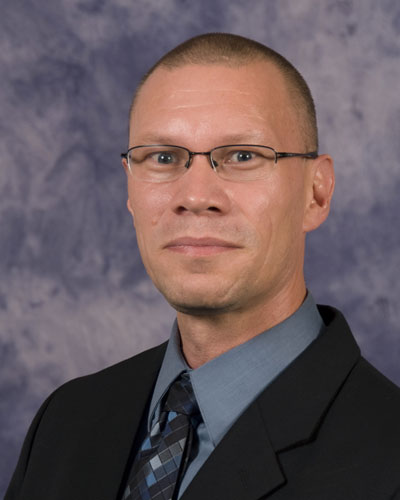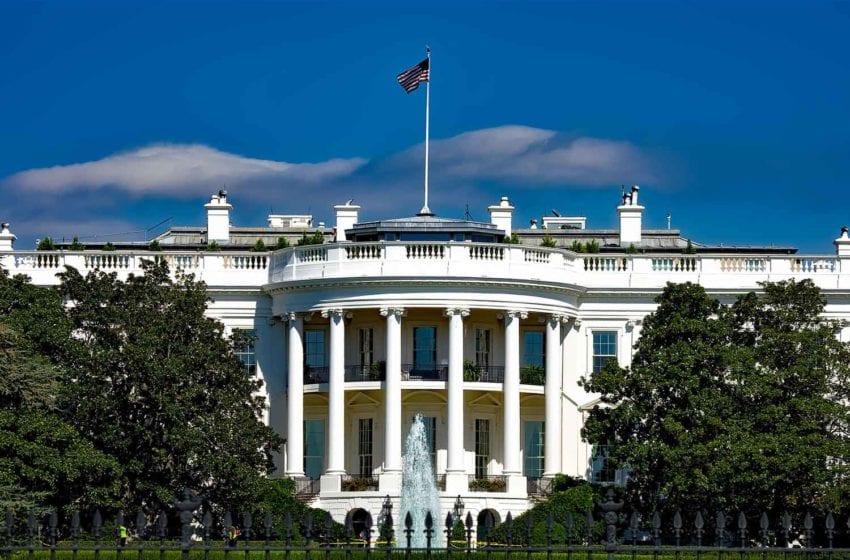
Participants in the 2017 Global Tobacco & Nicotine Forum debated the unprecedented current opportunity for public health and business.
By Taco Tuinstra
The 2017 Global Tobacco & Nicotine Forum (GTNF) convened in a magnificent place—New York City—at a momentous time.
“We are at a historic juncture,” said Debra Crew, president and CEO of Reynolds American Inc. (RAI).
“This is an extraordinary opportunity,” noted Mitch Zeller, director of the Center for Tobacco Products at the U.S. Food and Drug Administration (FDA).
“We are living in the most dynamic period of change the tobacco industry has ever encountered,” said Kingsley Wheaton, director of next-generation products at British American Tobacco (BAT). “When I think of my own two decades in the industry and the challenges during that period, nothing compares to where we are now.”
The speakers were referring, of course, to the unprecedented alignment of commercial and public health objectives, brought about by rapid innovation and changing attitudes among the primary stakeholders. Technological breakthroughs have allowed for the delivery of nicotine—a relatively benign yet highly addictive substance—in a way that satisfies consumers without generating the toxins associated with combustion. At the same time, regulators and some in public health have started to acknowledge the continuum of risk—the fact that not all nicotine products are equally harmful.
The shift began in 2015, when Public Health England stated that e-cigarettes are 95 percent less risky than combustible products and that they may play a role in smoking cessation. That view has gradually gained ground, even among former skeptics.
In July of this year, FDA Commissioner Scott Gottlieb announced a new tobacco strategy aimed at reducing the amount of nicotine in combustible cigarettes while encouraging innovation in less risky products. By making the most harmful tobacco products less addictive—and by promoting alternatives for adult consumers who still need or want nicotine—the agency hopes to make a bigger dent in tobacco-related death and disease than it would otherwise be able to achieve.
Also this year, Philip Morris International (PMI)—one of the world’s largest tobacco companies—made a historic pledge to phase out combustible cigarettes. Emboldened by the success of its iQOS tobacco-heating product (THP), the company is now firmly committed to a smoke-free future. To help bring about its vision, PMI announced it would donate nearly $1 billion over 12 years to the recently created Foundation for a Smoke-Free World (also see “Unfinished business,” page 30).
“We are making one of the greatest single changes in how we are thinking about tobacco control in the past 50 years,” said Derek Yach, president-designate of the new foundation, at the GTNF. “This is putting the finger on the product with seriousness—and it is done using market forces, which means it’s going to be sustained.”
That insight—that the combination of smart regulation and free enterprise will result in better public health than would a tobacco control regime comprising only top-down edicts—featured prominently throughout the 2017 GTNF.
“The cigarette train is running out of track,” noted Michael Cummings of the Hollings Cancer Center, with visible satisfaction. Nonetheless, he accepted that there would be opportunities for tobacco companies willing to make the transformation to reduced-risk products. “The smart money is betting on those who invest in the future,” he said.
Debra CrewRepresenting a company on the forefront of that transformation, in her opening address Crew elaborated on RAI’s ambitious portfolio conversion, which, like PMI’s initiative, envisions a shift from combustible cigarettes toward less harmful alternatives.
Decades of innovation, she said, have taught RAI two important lessons: the need to satisfy consumers and the importance of educating them. RAI pioneered the THP segment in the 1980s, with its Premier cigarette, but the company was ahead of its time. There was no support for tobacco harm reduction in those days, and, detrimentally, smokers didn’t like the product. RAI learned from the experience and went on to develop more appealing reduced-harm products, not only in heated tobacco but also in the vapor and smokeless segments.
But even if you have alternatives that satisfy users, consumer adoption still depends on public perception. In the case of vapor products, this remains problematic. “Many consumers incorrectly believe that vaping is just as harmful—or more dangerous—as is smoking,” said Crew. “Negative media and misleading statements from some in public health create confusion about facts and science.”
She compared Gottlieb’s challenge to develop breakthrough technologies to U.S. President John F. Kennedy’s 1961 call to land a man on the moon. If NASA can put a man on the moon, said Crew, surely the industry can put into smokers’ hands nicotine products that are less harmful than cigarettes but just as satisfying.
While acknowledging the remarkable public health opportunity, the next speaker, Zeller, reminded his listeners that some of the enthusiastically debated ideas are not new. The tobacco industry, he said, has long understood the roles played by nicotine and combustion in addictiveness and disease, respectively.
He cited the “particle size dilemma,” in which tobacco researchers recognized that the smoke particle size that most effectively delivers nicotine to the lung—1 micron—is also the one most likely to cause disease. Asked to help solve this conundrum, the research and development organization Battelle suggested to PMI an “instant cigarette” that would deliver the desired components in the form of an aerosol rather than smoke. That was in 1959, according to Zeller—prompting an audience member to quip that PMI came close to having a “predicate” product for its current vapor offerings.
Zeller expressed concern about the U.S. debate on harm reduction, which he described as “a total stalemate.” He said he hoped Gottlieb’s announcement would reframe the discussion and help realize the agency’s vision of a future where young people would no longer get addicted to cigarettes and adults who still needed or wanted nicotine have access to less harmful products.
Dorothy Hatsukami, Forster Family Chair in Cancer Prevention at the Masonic Cancer Center of the University of Minnesota, lamented that the tobacco product with the highest toxicity—the cigarette—currently has the greatest addiction potential. A more desirable landscape, she said, would be one in which the most toxic product is substantially less addictive than the least toxic product. An immediate reduction of nicotine would more quickly achieve the FDA’s health goals than a gradual one, she suggested, because it would lead to less “compensatory” smoking, among other unintended effects.
GTNF speaker Amy Fairchild of the Texas A&M University School of Public Health was more optimistic about the U.S. discussion than was Zeller, having detected movement toward common ground. At the outset of the e-cigarette debate, she said, harm reduction sharply divided the tobacco control community. Many saw in alternative nicotine-delivery systems a Trojan horse that was going to seduce young smokers, result in dual use and “renormalize” smoking.
But many skeptics, such as the Truth Initiative and the Campaign for Tobacco-Free Kids, have come around to the concept of tobacco harm reduction, according to Fairchild.
She cautioned, however, that broad acknowledgement of the principle might come at the price of diluting the scope and goals that reformers have sought to achieve. In addition to the continuum of risk, stakeholders should recognize a “continuum of harm reduction,” with varying levels of strictness, said Fairchild.
“The least restrictive approach requires toleration of the possibility of dual use, recreational use, lifelong nicotine consumption, some youth uptake and, most controversially, the recognition that the tobacco industry is going to be instrumental in manufacturing harm-reduction products—and that it will profit,” she said. Alas, the latter is enough for some health advocates to damage harm reduction as a viable approach.
Science featured prominently throughout the GTNF, just like it does—or should—in the overall tobacco-and-health debate. Julian Kinderlerer, immediate past president of the European Group on Ethics in Science and New Technologies, which advises European Commission President Jean-Claude Juncker, examined the interaction between science and policy. “Science should provide the information on which policymakers should be basing decisions,” he said. “Often it is the other way around, with policymakers asking scientists to provide that bit of information that will back up their prejudices.”
Kinderlerer worried about the growing tendency of policymakers to dismiss science altogether. “When the secretary of state for justice in the United Kingdom at the time of the Brexit referendum said, ‘We don’t need experts to advise us,’ one realized we had a problem,” he said.
Historically, science had been supported through patronage, explained Kinderlerer. Galileo’s work in the 16th and 17th centuries was supported by wealthy individuals, including the pope. As soon as the research didn’t meet the funders’ requirements, the funding stopped. “So, no change there,” he said.
Kinderlerer stressed that both policymakers and scientists should be held to account. “When policymakers ignore advice, they should tell us why,” he said. In turn, he added, policymakers should insist that, when public money is involved, scientists demonstrate the relevance of their work. “They should ask, ‘What benefit does it provide to our people?’” said Kinderlerer.
He reminded his listeners that most science is done in industry, a fact that is often overlooked. Industry has a right to have its voice heard, Kinderlerer insisted—and to be shown up if what it says turns out to not be based on evidence.
While most speakers at the GTNF in New York focused on tobacco and nicotine in the U.S. context, Mark Firestone, senior vice president and general counsel at PMI, provided an international perspective. Globally, he said, reduced-risk products face several types of regulatory hurdles. Some governments ban them outright; others allow them on the market but prevent truthful communications about their benefits. Yet others fail to create a framework altogether, leading to a regulatory vacuum.
None of these approaches are desirable, according to Firestone. “Launching a potentially reduced-risk product carries uncertainty,” he conceded. “However, there is a paradox in addressing that uncertainty through a pre-emptive ban.” Firestone said it makes no sense to limit the market to current combustible cigarettes, which are certain to be harmful.
He called on regulators worldwide to establish clear pathways, with standards for product design, oversight of the supply chain, and enforcement against false and misleading statements. “We need a system to bring products to market responsibly, efficiently and effectively,” he said.
Firestone also urged “pragmatic diplomacy,” citing the example of the French and the Germans, who after World War II created a common market to prevent future conflicts. “For all the EU’s problems, it has worked in its primary objective,” he said. If the French and the Germans could get together after such a devastating battle, Firestone suggested, the belligerents in the tobacco wars should be able to do the same.
Whereas most GTNF speakers approached the topic of transformation figuratively, describing their new business operations and product portfolios, Hugh Haydon, president of Kentucky BioProcessing (KBP), spoke about the subject literally. KBP uses tobacco plants to produce vaccines more quickly and less expensively than can be done using traditional methods. His talk highlighted a positive utility for a much-maligned crop.
Jose Luis Murillo, vice president of regulatory affairs at Altria Client Services, agreed with Firestone that viable regulatory pathways are crucial for reduced-risk products—and found the existing U.S. avenues wanting. “Right now, the FDA’s pathways are in significant need of clarification and streamlining,” he said. “Without that, many innovative products will not stay on the market or perhaps even make it to market.”
The FDA’s “substantial equivalence pathway,” he noted, is essentially closed because it requires tobacco companies to base their applications on a predicate product that was on the market as of Feb. 15, 2007—a time when there were virtually no e-cigarettes commercially available in the U.S. The modified-risk tobacco product (MRTP) application and premarket tobacco product application (PMTA), meanwhile, are unduly burdensome and costly, according to Murillo.
“If harm reduction is the goal, quickly moving vapor, heat-not-burn and smokeless [products] through the premarket regulatory process should get more and better reduced-harm products to smokers,” he said. “The faster we can do that, the faster we can make an impact on public health.”
The other key to success, says Murillo, is meeting consumer expectations. “If we develop a reduced-harm product that nobody buys, that’s a failure.”
Customer satisfaction is also at the front and center of BAT’s approach, as became clear during Wheaton’s presentation. “By creating a range of inspirational products, we aim to ensure that all consumer preferences are met,” he said.
BAT has invested a whopping £1.5 billion ($1.98 billion) in next-generation products over the past five years, and Wheaton was candid about how the transformation is being funded. “It is the combustible earnings reinvested into a portfolio of next-generation products that have and will propel this business forward,” he noted.
Wheaton detected in the present environment a win-win-win scenario in which BAT’s new products would benefit consumers, the company and society. “The triple win is about social benefit, delighting consumers and making BAT more sustainable—and profitable,” he said.
Like other speakers, Wheaton stressed the importance of an appropriate regulatory framework. “Regulation is often draconian, leading to unintended consequences,” he said.
That was a topic right down the alley of the next speaker, Mark Littlewood of the Institute of Economic Affairs. Littlewood said tobacco attracts heavy regulation because it is different from any other legal consumer good: It is highly addictive, presents risks to health when consumed as intended and offers no “ancillary benefits.”
“People have to eat or drink something,” he explained. “That doesn’t mean your diet has to be beer, wine, donuts and fast food, but these products provide a secondary life support. With tobacco, on the contrary, you can either smoke or not. It’s a luxury product—a product that is largely self-referential.”
Littlewood said the advent of less harmful nicotine products would cause the health-damage argument to slip away as a justification for heavy regulation and taxation. “We might get into a situation quite quickly in which a regulatory environment established for combustible cigarettes is simply an anachronism and simply does not apply to the world of next-generation products,” he said.
To illustrate his point, Littlewood cited several U.K. laws that have been rendered absurd by the passing of time. For example, it remains a criminal offense to wear armor in Parliament, you are not allowed to be drunk in charge of cattle in Wales and England (but presumably it’s OK to be drunk in charge of cattle in Scotland), and it is illegal to handle a salmon “in suspicious circumstances.”
Littlewood said the force of logic would eventually change the regulatory environment but that progress would be slow. He advised the industry to reach out to the media. The mainstream media, he said, does not like good news, so the industry should tell them how bad regulation is—“that there are perverse consequences—potentially costing many lives—if we don’t get it right, because it will be harder for people to switch from relatively dangerous products to relatively safer ones,” he said.
Littlewood also called for greater stakeholder engagement. “There are 1 billion smokers, but they are not particularly mobilized,” he said. Compared with other segments of society that consume a product or have a hobby, smokers and even vapers have been astonishingly politically ineffective, according to Littlewood. “Find, inspire, mobilize and motivate consumers—then you’ll have a colossally politically influential group on your side,” he said.
In his much-anticipated closing address, David O’Reilly, chairman emeritus of the GTNF advisory board and BAT’s group scientific and R&D director, evaluated the momentous changes in the tobacco business over the past decade through the lenses of the GTNF, the consumer and the industry.
Consumers have never had so much choice, he observed—and the industry is engaging them in a fundamentally different manner. “If we are going to convert smokers to safer, smoke-free alternatives, we can’t just go into a traditional tobacconist and pop the product on the shelves and hope they notice and buy it,” he said. “There is a hurdle that has to be crossed.”
Vape stores have led the way in consumer education. Visiting one, O’Reilly marveled, is an incredible experience. “You’re taken care of; you’re taught about the product. … You’re made to feel not like an idiot wrestling with this new technology,” he said. BAT’s flagship THP stores were inspired, in part, by vape stores, according to O’Reilly. “And that’s what it’s going to take to convert smokers to smoke-free alternatives.”
Meanwhile, the advent of new technology has made the “employer brand” of tobacco and nicotine products more engaging.
“It used to be hard to recruit people into our companies; who would want to work in tobacco?” said O’Reilly. “Now they are flooding us. We are competing for millennials not just with the other [tobacco] companies but with Unilever, P&G, GlaxoSmithKline. Working in our company is more exciting than developing a new washing powder or a beverage or an ice cream—and, by the way, they are going to save a billion lives.”
Twenty percent of BAT’s senior R&D population has been hired in the past three years, according to O’Reilly. The new recruits have backgrounds in variety of sectors, such as pharmaceuticals, technology and fast-moving consumer goods.
BAT’s supplier base, too, has changed dramatically. “It used to be fairly static—tow, paper, leaf, wrapping materials,” he said. “Now we are working with some of the best technology companies in the U.S., China and elsewhere—big battery suppliers, consumer electronic suppliers, 3-D printing, prototyping.”
For O’Reilly, the fundamental takeaway from the New York GTNF was how far behind regulators are—behind the consumers, the science, the products and the manufacturers.
“Part of me says, ‘Screw them; we’ll make this change’—but of course they could screw this up for us,” he said. “So, we must work with them, to help them see that the industry has changed—that the consumer landscape has changed.”
O’Reilly then spoke about the need for compassion. When it comes to consumers, it’s easy to rattle off numbers, he noted: 40 million smokers, 11 million smokeless users, 20 million vapers. “But these are people—fathers, mothers, brothers, sons and daughters,” he said. In this context, O’Reilly expressed concern about the FDA’s plan to significantly reduce nicotine in cigarettes. “They are about to experiment on 40 million Americans,” he said. “The experiment could be fantastic; it could rival water sanitation, transforming public health—but it could also go badly wrong. One thing that will help us collectively make the right decision on that is compassion—we need to see our consumers as people.”
Looking ahead, O’Reilly questioned what the industry would be talking about at the GTNF in 2018. Change, he predicted, would continue at a rapid rate. “How high will tobacco heating go in Japan? How many vapers will there be in the U.S.? Let’s see what happens in the policy and regulatory environment in the U.S.,” he said. “The [FDA’s] July 28 statements were very positive, but as one of my colleagues at Reynolds said, ‘Words are wind. We need to see action.’”
“Whatever happens,” he concluded, “the GTNF will be at the heart of the discourse of this important transformation of the industry that we love so much.”













